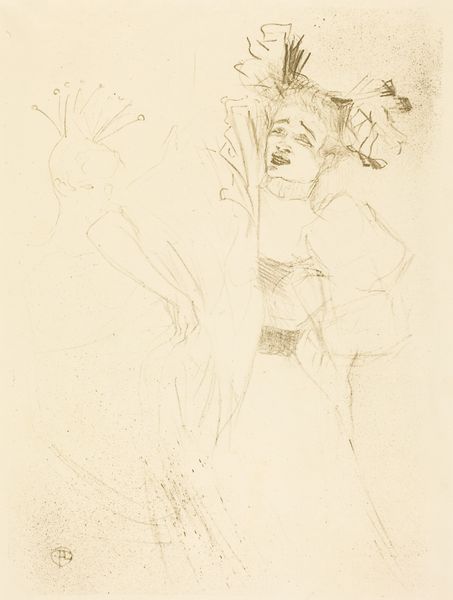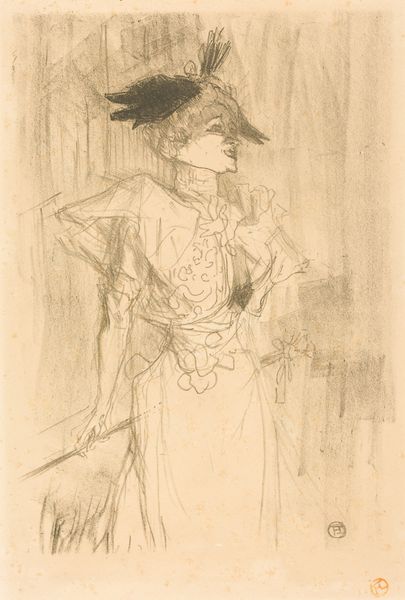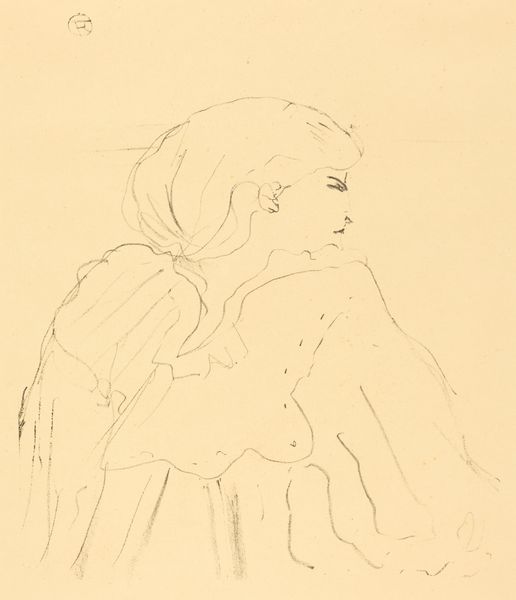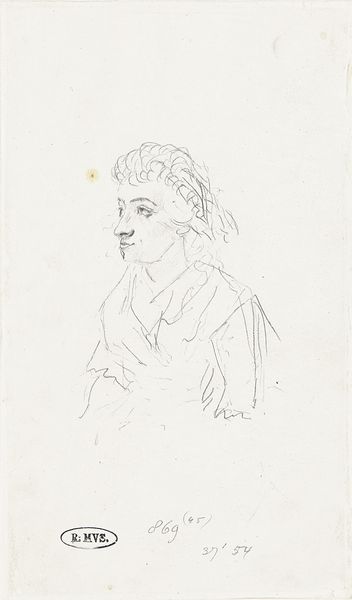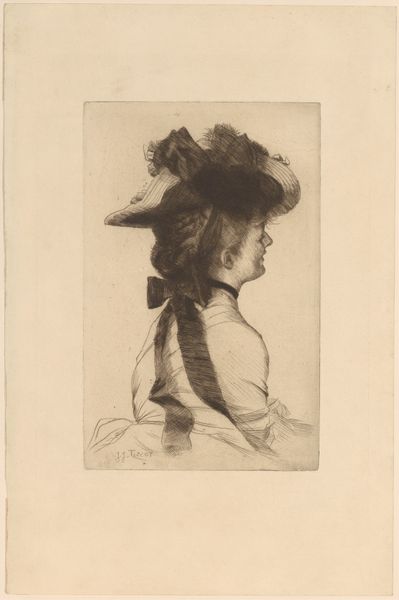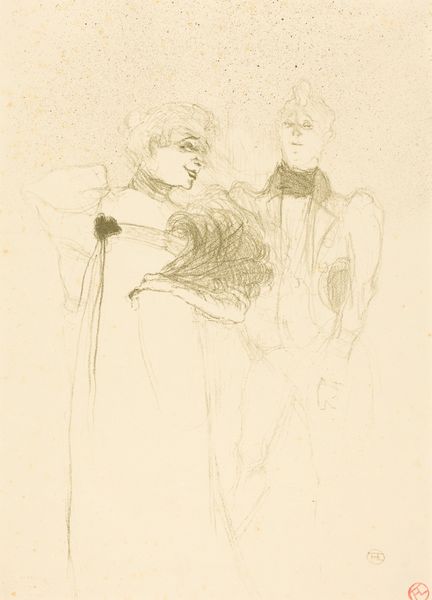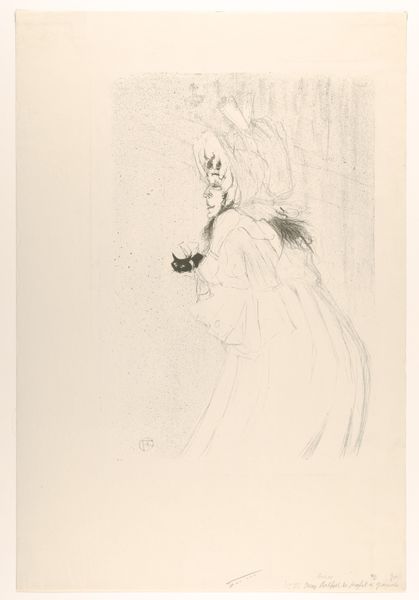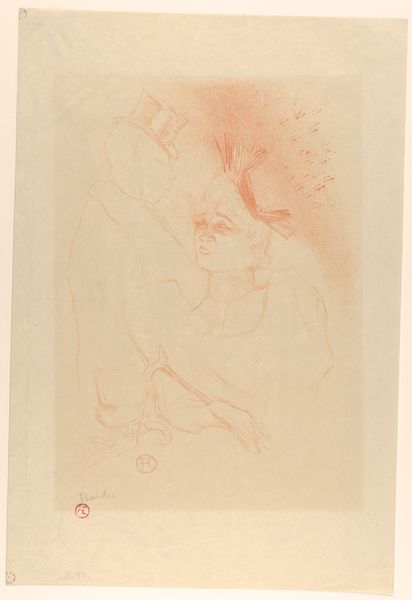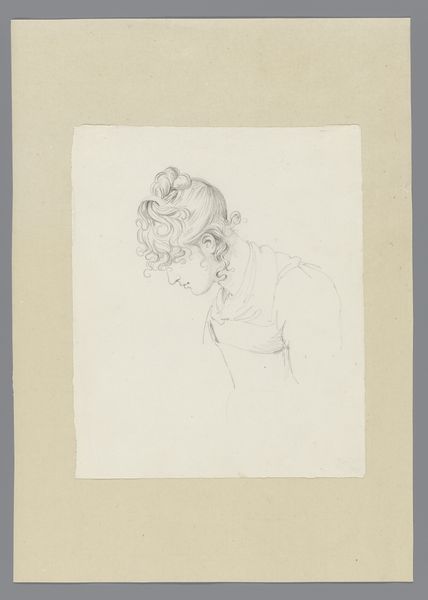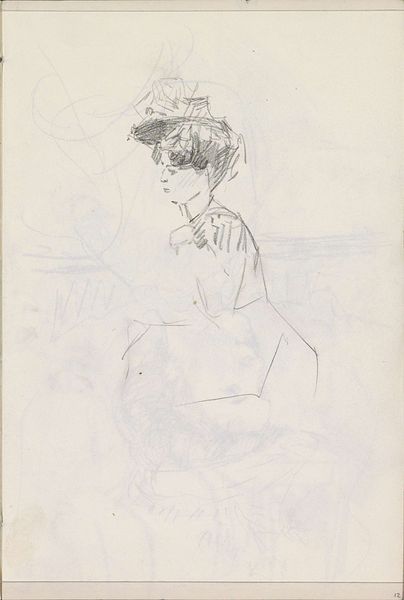
Portrait Bust of Mademoiselle Marcelle Lender 1895
0:00
0:00
Dimensions: Image: 17 3/16 × 13 1/8 in. (43.7 × 33.3 cm) Sheet: 22 7/16 × 15 3/8 in. (57 × 39 cm)
Copyright: Public Domain
Curator: This graphite drawing on paper from 1895 is Toulouse-Lautrec's "Portrait Bust of Mademoiselle Marcelle Lender," housed here at the Met. It has such spontaneity. Editor: Immediately, the sketch-like quality strikes me. It feels like a fleeting moment, a glimpse captured rather than a posed portrait. It seems wistful and unfinished somehow. Curator: Absolutely. Toulouse-Lautrec often frequented the Moulin Rouge, where Mademoiselle Lender was a celebrated performer. What we're seeing here is deeply rooted in the theater and nightlife of fin-de-siècle Paris, spaces of experimentation, and burgeoning celebrity culture. Editor: The focus on her profile underscores that feeling, like a shadow caught backstage. There is so little shading, I feel that this is meant as more of a study of her position and the set and not her person. What are your thoughts about that assessment? Curator: I think it really invites questions about the gaze and power dynamics. Toulouse-Lautrec's work has always been fraught in terms of how it represented marginalized figures, particularly women. Was he celebrating them or exploiting them? I would not agree with your statement about it not capturing her as a person; to the contrary, this portrait seeks to glorify the model herself. Editor: It seems clear that art historians now want to address these very questions. These were questions that were just being looked at when I myself was studying art history in graduate school. The social, cultural, and institutional lenses allow for some great discussion for a modern audience that seeks more information about the figures presented. I like that museums are acknowledging the questions a bit more prominently today. Curator: Indeed. It reflects the institution's commitment to evolving narratives around art and its relationship to broader social issues. By exploring those questions we also open possibilities for future interpretation. Editor: Absolutely, looking through this social and cultural context really allows an interesting point of reflection on how times have changed! Thank you for discussing the art, it's always fascinating. Curator: Thank you, my perspective always shifts in some way when discussing with other points of view!
Comments
No comments
Be the first to comment and join the conversation on the ultimate creative platform.
